Eucalypt Action Group weekend near Golden Bay
Eric Cairns, Piers McLaren and Gary Fleming, New Zealand Tree Grower February 2020.
This event, in October last year, was well organised and put together mainly by Vaughan Kearns, George Shallcrass and Tim Ekert. It was made more memorable because of shared accommodation and meals.
The Saturday afternoon was at Milnthorpe near Collingwood. The main party arrived late, having been delayed by events at Nelson airport, but caretakers at Milnthorpe, Tim and Jane Ekert were not concerned. Tim was demonstrating his Norwood band saw mill on some Eucalyptus obliqua, or it could have been E. fastigata, when we arrived.
A relatively small tree had died standing and was to be processed for building structures within the park as agreed by the park rules. We viewed how Tim relieved growth stress and re-sawed to get straight 100 mm by 50 mm lengths. Lunch was enjoyed at the caretakers’ house, an elevated spot surrounded by exotic garden including fruit trees.
How it all started
The founder, Dick Nicholls was present. He had effectively squatted on abandoned farmland back in the 1970s. When attempts by Land and Survey to revegetate the impoverished pakahi soils had failed, Dick was able to show that eucalypts and acacias were adapted to the conditions, could enrich soils, shade out gorse and allow shade tolerant native trees including podocarps to establish.
There has been a remarkable turn-round in only 35 years, and the process has now been coined the Milnthorpe Model as a way of re-establishing native vegetation on harsh sites. In 1999 the park officially became a Scenic Reserve, administered by an incorporated society under agreement with the Department of Conservation. There are many kilometres of walking tracks, bird and plant life is thriving, and there is an active pest management programme.
Over 40 eucalypt species
It is perhaps a little controversial that some potentially weedy species were used in the park. Various acacias, rhododendrons, Syzygium (lilli pilli) among others, but with active management still going on, none of these dominate and all allow other species to establish underneath.
Perhaps the most conspicuous feature of the park, and the real reason why we came all that way, is the large number of eucalypt species which were established. A total of 41 species are listed as numbered trees in the park, but there were many more. Dick was able to import seed from various Australian sources, grow them on, and experiment with siting. Tim Ekert described it as shotgun forestry, a bit random, but it works as a forest restoration tool. Eucophiles were keen to try and identify the many species, some of which were fairly rare in New Zealand.
Eating your cake
Piers Mclaren talked about The Milnthorpe Model and about carbon forestry. He described the exotic and native mix as having your cake and eating it. Arboreal racism was promoted in some quarters.
He pointed out that eucalypts and acacias were native to New Zealand before the last ice age, and that fact should assuage the purist native-only brigade. He elaborated on the guiding philosophy for the park, no thinning or pruning, as failed trees became humus. We did observe that manuka, hakea and gorse had been actively thinned to allow other native trees to establish.
Milnthorpe Model
Piers Maclaren
The Milnthorpe Model was a term first used in the extensive nationwide MAF carbon forestry roadshow of 2010. The phrase described a way of maximising carbon payments, as well as establishing native forests.
Under the Emissions Trading Scheme, for areas less than 100 hectares, the default option of calculating carbon must be used. Highest values are for pines or eucalypts, with indigenous forestry at far lower values. Radiata pine figures vary by region. For example, at age 25, Gisborne grown pines are estimated to have a stock of 722 tonnes of carbon dioxide equivalents a hectare, hardwoods in the form of eucalypts 618, Nelson pines 543 but only 75 tonnes for indigenous forests.
Indigenous preference
It is readily apparent that many New Zealanders are appalled at the prospect of a billion trees of radiata pine. Most would undoubtedly prefer indigenous forestry, but the cost is prohibitive, the commercial potential zero and the carbon growth is very small. At Milnthorpe, it is clear that a cover of eucalypts has dominated the canopy and suppressed the understory vegetation, such as gorse, hakea and especially grasses, which would compete against natives. Birds have introduced native seeds and there is now a prolific native understory.
Some agencies have planted native trees elsewhere, but the cost of seedlings along with the suppression against competition makes this a very expensive option. It is also arguably a slow route to indigenous reversion compared to the Milnthorpe Model.
A national prototype
False comparisons are often made between the carbon stock of a traditional radiata pine regime versus a non-harvested indigenous forest. But even a small carbon payment of $5 to $10 a tonne changes the way that radiata pine would be grown, with high stocking and very long rotations and a consequent rise in carbon stocks. The point is that the average carbon in a periodically-harvested radiata pine forest on a 50-year rotation greatly exceeds the carbon in a native forest by a factor of at least three.
In terms of economics, the land expectation value for a carbon forest such as Milnthorpe is about $4,500 a hectare assuming $3,000 for trees and planting, and an eight per cent discount rate. At a more contemporary discount rate of five per cent or even two per cent, you get astonishing land expectation values of $7,000 to $11,000 a hectare respectively.
Put another way, if your elderly aunt lent you money at zero interest for a carbon forest, how long would it be before you could pay her back? It would certainly be within 15 years at current land and carbon prices. But the carbn price will probably go up, perhaps to as much as $250 a tonne, the current estimate of the minimum cost of geological carbon sequestration.
There are enormous implications for sheep and beef farming which just cannot compete, and for the way we grow trees. The Milnthorpe Model may become a national prototype.
Syndicate forestry
Gary Fleming
On Sunday we travelled to a 14-hectare syndicate forestry block where the first plantings started 21 years ago. There was a mixture of all the usual special-purpose species, but mainly Cypress lusitanica and blackwoods. They were starting to production-thin, mainly the cypress, ready to mill and sell the timber and we had quite a discussion on marketing. We also had a look around some of Tim Eckert’s property which is adjacent.
Tim has more eucalypts, mostly E. saligna and E. botryoides, but has also included some of the naturally ground durables, E. bosistoana, and E. quadrangulata. After talking to Dean Satchell, Tim also planted some E. sphaerocarpa blackdown stringybark which were looking good.
We then went to Humfrey Newton’s property which is on both sides of the main road and has public access. Humfrey has significant botanical knowledge and has planted a range of trees, including some very impressive deciduous trees which in the high rainfall and warm climate have grown rapidly.
Humfrey is experimenting with black walnuts to see if various hard pruning treatments a couple of years before harvesting will increase the heartwood content. There is also an interesting area of large bamboo from which the local community harvest the smaller edible stems, which Humfrey says encourages new larger ones to grow.
On Sunday night we heard from a local speaker, David Bott, about substantial plantings planned for his property. They are mostly high quality eucalypts for which he has imported quantities of seed from Australia.
On Monday morning we went to look at Charlie Haskell’s property on the edge of the Takaka hill. Charlie is a film director who lives in Golden Bay, but works in Auckland. Charlie has 21 hectares of forest, planted in 2001.
Some of the photographs taken by John Millet during the Action Group weekend
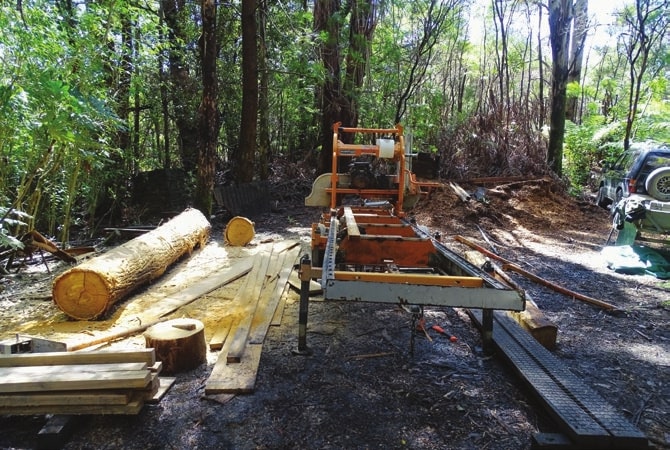
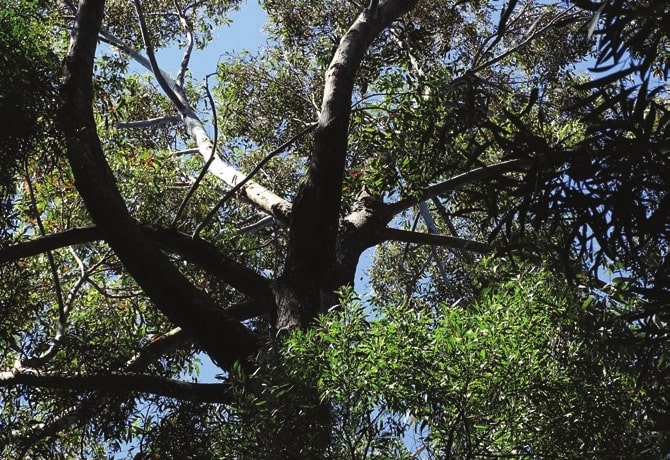
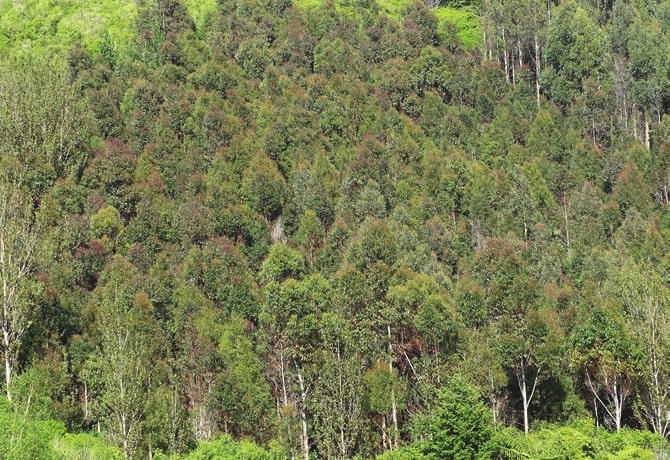
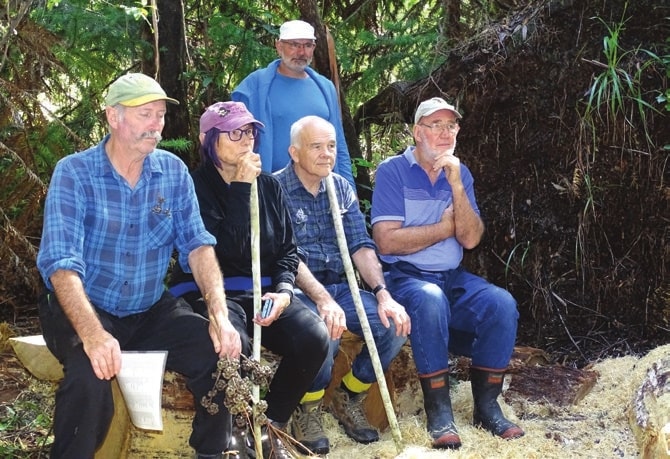
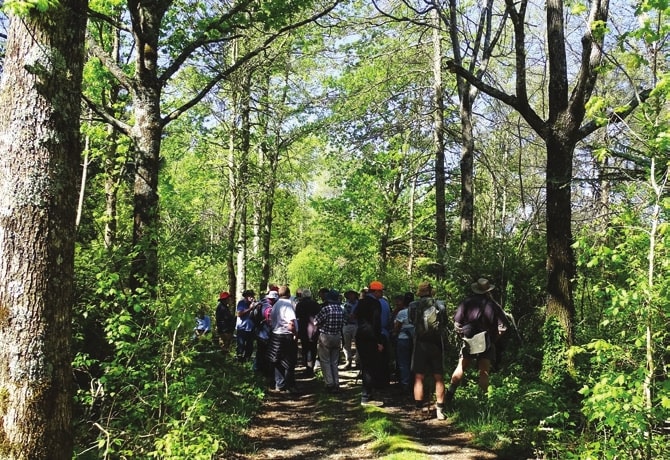
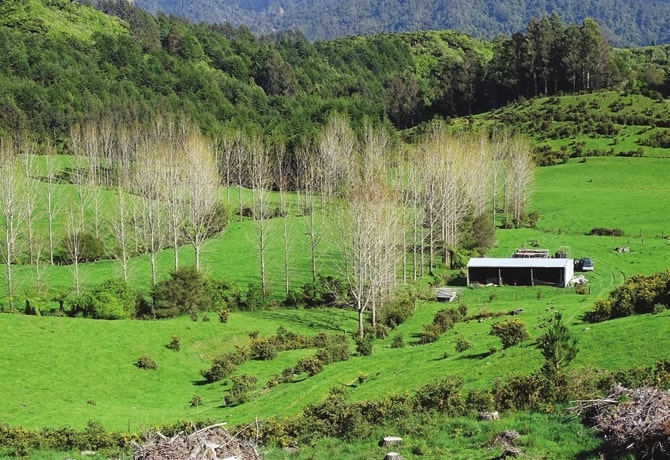
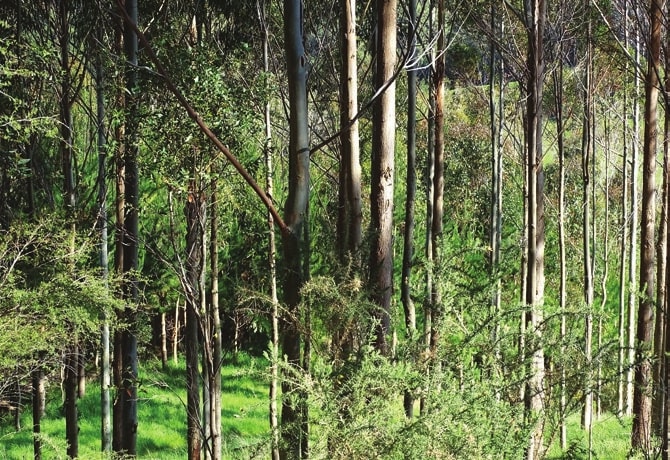
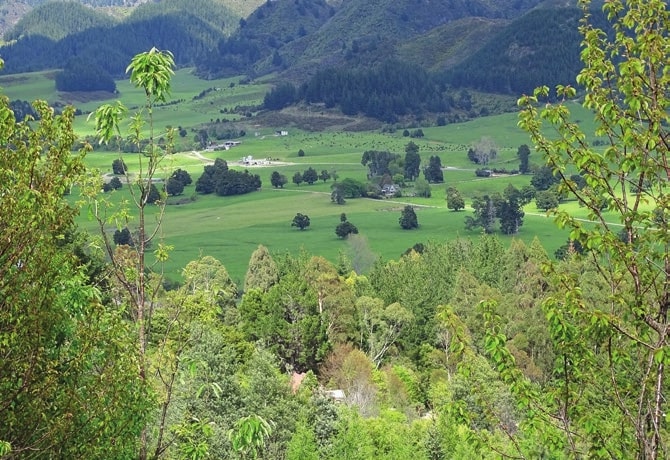
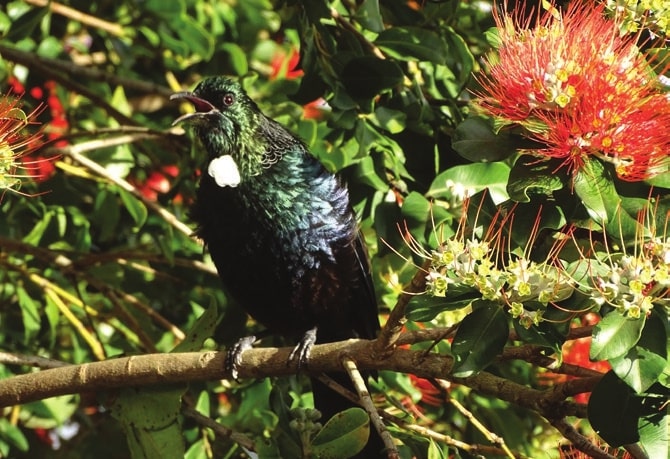

 Farm Forestry New Zealand
Farm Forestry New Zealand

